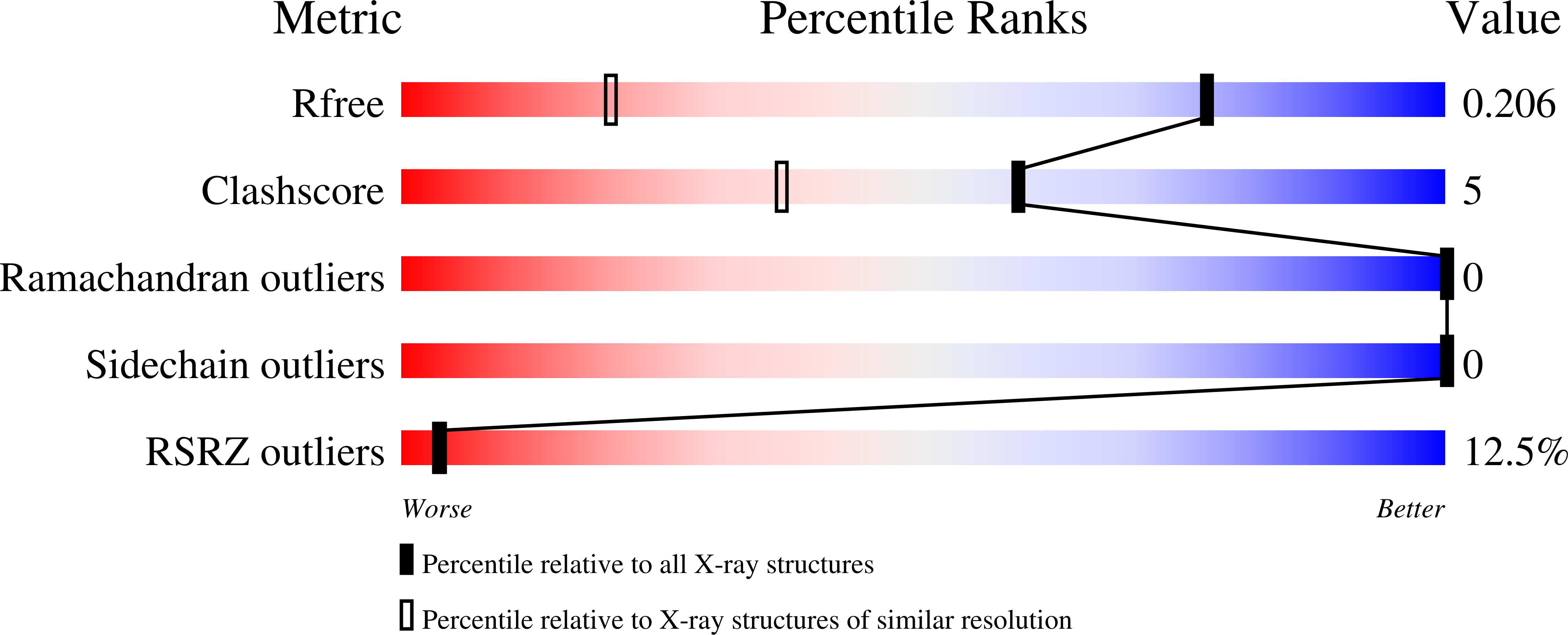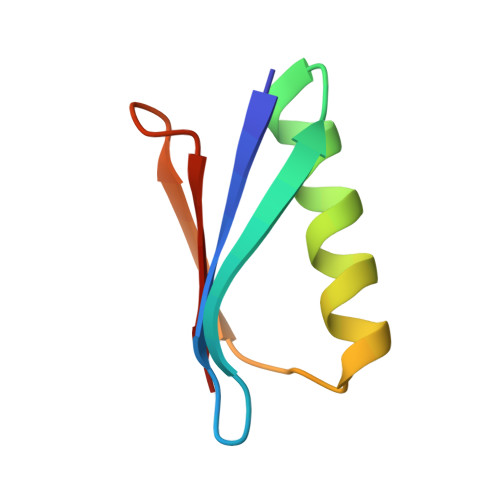Optimization of the gbeta1 domain by computational design and by in vitro evolution: structural and energetic basis of stabilization.
Wunderlich, M., Max, K.E., Roske, Y., Mueller, U., Heinemann, U., Schmid, F.X.(2007) J Mol Biol 373: 775-784
- PubMed: 17868696
- DOI: https://doi.org/10.1016/j.jmb.2007.08.004
- Primary Citation of Related Structures:
2ON8, 2ONQ - PubMed Abstract:
Computational design and in vitro evolution are major strategies for stabilizing proteins. For the four critical positions 16, 18, 25, and 29 of the B domain of the streptococcal protein G (Gbeta1), they identified the same optimal residues at positions 16 and 25, but not at 18 and 29. Here we analyzed the energetic contributions of the residues from these two approaches by single and double mutant analyses and determined crystal structures for a variant from the calculation (I16/L18/E25/K29) and from the selection (I16/I18/E25/F29). The structural analysis explains the observed differences in stabilization. Residues 16, 18, and 29 line an invagination, which results from a packing defect between the helix and the beta-sheet of Gbeta1. In all stabilized variants, residues with larger side-chains occur at these positions and packing is improved. In the selected variant, packing is better optimized than in the computed variant. Such differences in side-chain packing strongly affect stability but are difficult to evaluate by computation.
Organizational Affiliation:
Laboratorium für Biochemie und Bayreuther Zentrum für Molekulare Biowissenschaften, Universität Bayreuth, D-95440 Bayreuth, Germany.














